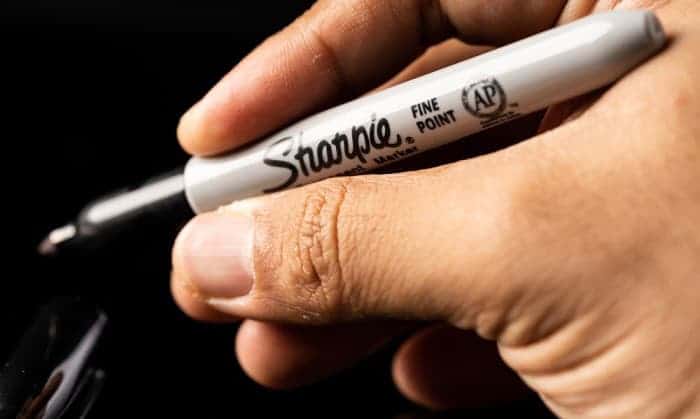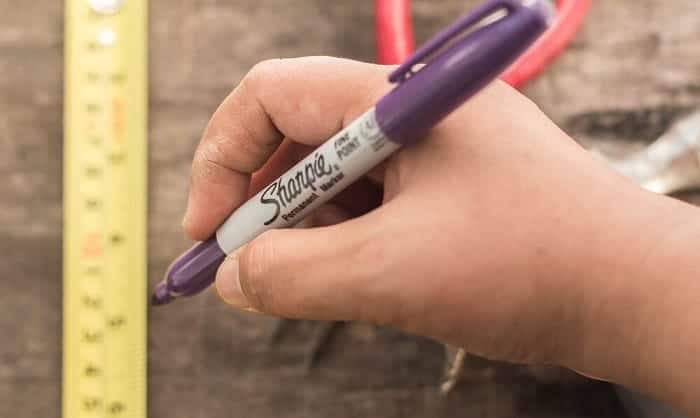Do your children like to create fun art? If so, I bet your house is covered with many beautiful pictures. Moreover, there may be plenty of markers such as markers for cardboard or calligraphy markers and Sharpie markers in your home.
Painting on various surfaces, such as walls, paper, or even plastic, can be very appealing to your kids. Nowadays, more and more houses are using plastic as a medium for their children to draw, as it can be reused, and is thus, money-saving.
While some of the products may end up being washed away or thrown away, others are collected and saved because they hold memories of your kids’ childhood. Nonetheless, the problem is many Sharpie drawings on plastic usually fade out after a long period of time.
So, have you ever wondered how to seal Sharpie on plastic? In other words, what can be done to make Sharpie stay on plastic? If so, this article is for you!
In this tutorial, I’ll introduce you to a step-by-step guide to make Sharpie permanent, such as using Sharpie fixative spray to achieve your goals. Here are the steps you need to follow:
- Clean The Surface Beforehand: Make sure that the surface is dry, clean, and ready to be written on.
- Prepare The Surface: This step is different from the previous one because sanding is required; to make the ink grip the surface better.
- Choose The Right Markers: Choosing the right type of markers that best suit your art purpose.
- Create Astonishing Art Pieces and Let The Ink Dry: Have fun writing or drawing on the plastic and let the ink dry for some time.
- Seal The Deal: Some materials can work well on making your markers stay on the plastic, including a mod podge and a nail polish.
Table of Contents
5 Easy and Simple Steps to Seal Sharpie on Plastic
So, that was a brief introduction of what I’m going to walk you through. Are you ready to find out the details? Let’s get started with the first step: clean the surface beforehand.
Step 1: Clean the Surface Beforehand
Nobody wants to use their markers on a surface with specks of dirt or residues. Hence, it’s always a good idea to clean your plastic before writing anything on it. To get started, you need to prepare some paper towels, soap, and water.
- Mix soap and water according to your choice, preferably 2 tsp. soap to 1 tsp. water ratio, and dip the paper towels into that mixture.
- Squeeze these paper towels so that they aren’t too soaky.
- After that, use these paper towels to clean the surface.
- Once it is done, rinse the plastic with some clean water and let it dry.
Furthermore, you must wash all oily substances on the surface. Any grease spots on the plastic will make it extremely difficult for us to finish the process. In addition, oily areas can easily dissolve our marker ink afterward.
Therefore, after washing the surface with soap and water, rub some alcohol onto the plastic. Citrus juice is a great alternative.
Make sure that your plastic is dry and clean, and of course, oil-free. Be careful not to let alcohol or soapy water touch your eyes.
Once you finish cleaning the surface, we’ll come to the next step: prepping the surface.
Step 2:Prep the Surface
Many will think that cleaning up the surface is already enough preparation to move on to other steps. Not quite, as this sanding step is required to make your Sharpie ink last longer on the plastic surface.
You can rub sand over the surface or use sandpaper to acquire a similar result. Sanding is a final step to check that your surface is clear of any remaining water or fatty substances.
Additionally, sanding will give the surface hardness, which is good for your ink to stay longer in the area. The reason is when you rub sand onto the plastic, it creates microscopic holes that allow your ink to absorb the surface better.
However, don’t rub the sandpaper against the plastic surface too intensely as it can damage the whole area.
This step is crucial as it is the final check to see if we have left any area uncleaned. After this, you are all good to go! Yet, before proceeding to the writing section, find out which type of markers can last long on plastic.
Step 3: Choose the Right Markers
Choosing the right markers helps to make the ink permanent on the plastic surface. There are various types of markers available in the market, but I recommend using oil-based markers.
Oil-based markers are well known for working well on multiple surfaces, such as wood, glass, metal, plastic, etc. Moreover, they do not create smudging or smearing and are often permanent.
Also, oil-based markers are perfect for staying longer on the plastic and creating a shiny effect on your drawings. You can choose your oil-based markers from popular brands, such as Sharpie or Crayola.
After preparing the surface and choosing the correct type of markers to use on plastic surfaces, it’s time we begin our creation!
Step 4: Create Astonishing Art Pieces and Let the Ink Dry
We use oil-based markers because we want to take advantage of the fact that water and oil are not friends with each other! Moisture from the environment cannot affect our markers as they are oil-based.
After you have created your work on the plastic surface, leave it there for a few hours. Now, you can have some time to rest and come back prepared to make your Sharpie ink last longer on plastic.
Step 5: Seal the Deal
Even the most powerful markers cannot defeat time alone. That’s why we have to layer coatings as a protection for our drawings.
Various materials can protect our precious masterpiece, but mod podge proves to be one of the most efficient.
- Make sure the ink is completely dry.
- Use a mod podge to cover your drawings using one of these two ways: spray it all over the written area or apply the liquid type on the surface.
- Let it dry over the marker ink for a generous amount of time. Once it dries, your Sharpie ink should now stay for a very long time.
Alternatively, you can use nail polish since it also serves the same purpose. Even better, nail polish is easier to find and can add a little shiny touch to your drawings.
You can try resin or add sparkles to finish your work in a cooler way.
Conclusion
Expressing oneself through words or pictures is fun and creative. Nevertheless, to keep our work last longer, we need to know some tips such as how to seal Sharpie on plastic.
I hope this article helped you preserve your or your children’s work better. Did you have fun coating the marker ink? Let me know in the comments. If you find this article helpful, share it with your family and friends as well.

I am a former art teacher, so it is evident to me the importance of art in educating the new generation. We also want to help parents who plan to teach their children and desire the best tools and tips for them.


